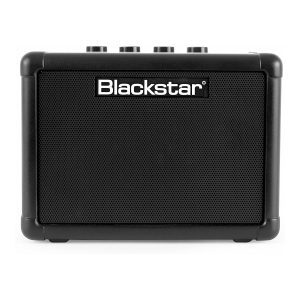
- Digital «Tape» Delay Effect
- MP3/Line In For Jamming Along Or Listening To Music
- Patented ISF
- 8” Fender Speaker
- Reverb, Delay/Echo, Chorus, Tremolo, Vibratone Effects
- Single Channel And Input
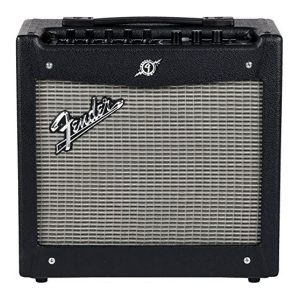
- 8” Fender Speaker
- Reverb, Delay/Echo, Tremolo, Phaser And Other Effects
- 17 Amp & 24 Onboard Presets
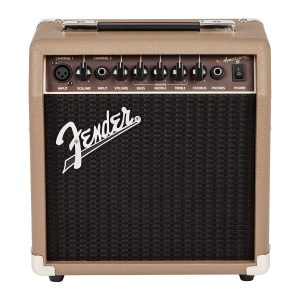
- 6” Fender Speaker
- ¼” Jack For An Instrument And An XLR Input For A Microphone
- Headphone Output

- 6.5” Speaker
- Master EQ: Treble, Middle, Bass. Jacks: 6.35 MONO JACK
- Controls: Volume, Gain, Drive
Choose the Best Metal Amp Under $300
Customer’s Choice: the Best Rated Metal Amps Under $300
13 users answered this survey. Please help us improve this review!
A metal music amplifier is a type of amp that has been modified to produce the distorted and amplified sounds used in heavy metal. The word “metal” can also refer to genres such as traditional and power metals, which typically play at faster tempos than other types of rock or pop songs.
Metal amps were first developed for electric guitars by guitarists who wanted louder amplification with more distortion so they could be heard above drums and bass when playing live shows. Metal amplifiers are often paired with specific speakers called cabinets designed specifically for the frequency range needed to reproduce high-intensity drumbeats, low-frequency guitar riffs, screaming vocals, etc. Some styles even use multiple speaker cabinets stacked on top of each other (called “stacks”), or even a larger speaker enclosure that houses multiple speakers (called “cabs”).
Metal amps are often optimized for the loudest, most intense sounds needed in heavy metal by using tight bass response and powerful high-end frequencies. The best metal guitar amps will produce extremely low frequencies with minimal distortion while also having great attack characteristics so the sound is not too muddy or overbearing.
Metal amplifiers can be used to play other genres of music besides traditional and power metals, but they are typically associated with harder styles because of their unique tone quality.
How much does a good amp cost? The answer to this question will vary depending on what you are looking for. If your goal is to find the best metal amps under $300, then you have come to the right place! Here metal music experts offer a wide variety of amps from all different price points and brands so that there is something for every budget. Look below for 5 favorite options in this category!
Table of Contents
Blackstar Electric Guitar Mini Amplifier – the Editor’s choice!
 The Blackstar Amplifier is a mini amplifier guitar with a tone you can take anywhere. It’s good for practicing in your bedroom, or for using headphones when you’re on the move. The Convincing Tape Delay option will allow you to create your most creative and intricate delay sounds, perfect for spicing up any song!
The Blackstar Amplifier is a mini amplifier guitar with a tone you can take anywhere. It’s good for practicing in your bedroom, or for using headphones when you’re on the move. The Convincing Tape Delay option will allow you to create your most creative and intricate delay sounds, perfect for spicing up any song!
For added convenience, there’s even an input jack on top for use with phones and MP3 players too!
With a wide array of great tones, this tough little amp will quickly become indispensable to any player who wants their portable sound-to-sound more than just decent!
This Blackstar product is a compact mini amplifier perfect for practicing with headphones. With so many options, sound performers can find the tone they’re looking for in an artistic or humbling mini amp that is also phone and MP3 compatible.
Fender Champion 20-Watt Electric Guitar Amplifier – the best for beginners!
 Practice sessions are even better with the Fender Champion 20-Watt Electric Guitar Amplifier, an amplifier designed to provide a big crowd of sound. If you’re looking for an amp that will let your music shine through on those days when you just don’t want to play at full volume, we’ve got what you need.
Practice sessions are even better with the Fender Champion 20-Watt Electric Guitar Amplifier, an amplifier designed to provide a big crowd of sound. If you’re looking for an amp that will let your music shine through on those days when you just don’t want to play at full volume, we’ve got what you need.
Capable of delivering true-to-life tones and up to 20 watts of distortion, it instantly makes any practice space feel more like a performance space. This little device is easy to set up and use – simply plug in your electric guitar or bass instrument and start practicing! The effect board lets you tweak your sounds as needed so they suit both you as an artist as well as the venue.
Are you looking for a way to get started with an amplifier? Look no further than this Fender amp, the Champion 20-Watt Electric Guitar Amplifier. It’s perfect if you’re just trying to practice or do some smaller gigs without breaking the bank.
Fender Mustang I (V.2) 20-Watt Electric Guitar Amplifier – the best for the digital recording!
 Introducing the Fender Mustang I (V.2) 20-Watt Electric Guitar Amplifier! It’s packaged with authentic-sounding amp models, great USB connectivity, our free software Fender FUSE for guitarists who are into digital recording and want to create an amazing studio sound not just when they’re on stage but when they’re playing alone in their room.
Introducing the Fender Mustang I (V.2) 20-Watt Electric Guitar Amplifier! It’s packaged with authentic-sounding amp models, great USB connectivity, our free software Fender FUSE for guitarists who are into digital recording and want to create an amazing studio sound not just when they’re on stage but when they’re playing alone in their room.
The best part is that any guitar player will find these features useful– whether it be at home, in a band, or even gigging! With its high-quality effects and incredible modeling amps, this new product from Fender is going to be a favorite of many people – not just guitar players.
The Fender Mustang I V2 is a 20-watt amplifier, great for guitarists who are into digital recording. This amp features authentic-sounding amp models with USB connectivity and free software.
Fender Acoustasonic 15-Watt Amplifier – the best for acoustic guitars!
 This Fender Acoustasonic amplifier provides a beautiful and transparent sound while still being great for carrying around with you. The design is both stylish and well-built, and it does not sacrifice quality output. Your daily practice sessions will never be the same once you get your hands on this amp!
This Fender Acoustasonic amplifier provides a beautiful and transparent sound while still being great for carrying around with you. The design is both stylish and well-built, and it does not sacrifice quality output. Your daily practice sessions will never be the same once you get your hands on this amp!
It has a crowd-pleasing 15 watts of volume, which is enhanced by its specially designed Fender speaker. It’s lightweight and conveniently portable so you can put your best sound on display wherever you need it. Its headphone output allows you to play without disturbing others and it also comes with a 5-year warranty, guaranteeing your satisfaction.
This is the perfect acoustic amp for those that want to take their guitar with them on trips or just enjoy a little music at home.
Sawtooth 10-Watt Electric Guitar Amp – the best for portability!
 Affordably priced, this Sawtooth 10-Watt electric guitar amp can be the perfect solution for any guitarist looking to improve their sound. Staying true to its “Sawtooth” namesake, this cut-through amplifier will give you a high-quality signal at an impressive signal-to-noise ratio, thanks to its open weave grill design.
Affordably priced, this Sawtooth 10-Watt electric guitar amp can be the perfect solution for any guitarist looking to improve their sound. Staying true to its “Sawtooth” namesake, this cut-through amplifier will give you a high-quality signal at an impressive signal-to-noise ratio, thanks to its open weave grill design.
Along with the ChromaCast Guitar Cable and Pick Sampler included in the price, it’s light enough for easy transport yet loud enough for small gigs.
The Sawtooth is a 10-watt electric guitar amplifier with a clean tone and plenty of volume to power your bedroom jam sessions. It’s perfect for acoustic or electric guitars, mandolins, banjos, ukuleles – basically any small but loud instrument!
This small amp doesn’t sound too bad for its size! The powerful Sawtooth 10-Watt Electric Guitar Amp features an open weave grill that lets your sound be heard no matter where you are. You can even use it with other instruments, like keyboards and acoustic guitars. It weighs less than 5 lbs., making it easy to carry around.
The Buyer’s Guide
Metal amps are versatile and can be used for playing different types of music. A metal amp’s sound is usually very heavy, but some models also can be used to play jazz or pop-rock styles with no problems. The main feature that makes an amplifier a “metal amp” is its gain range. Gain refers to the amount of distortion produced by an amplifier when it is turned up loud enough (this is measured in decibels).
Metal amplifiers have a more powerful bass boost than clean ones do because they need this extra power to produce their characteristic high levels of distortion without overloading the speakers, which could damage them easily if not handled properly. It helps keep your tone rich even at high volumes so you don’t have to keep fiddling with your amp’s knobs in the middle of a performance.
Another feature that sets metal amps apart from other types is their gain structure (this means how much and where they boost or cut frequencies when you turn up the volume).
Main Features:
- Types:
- Solid-state amplifier. A transistor-based amplifier with no tubes involved at all. It’s easy to use, low weight but lacks the warmth associated with a truly great sound;
- Hybrid amplifier. This is where mixing vacuum tubes together with transistors achieves an effect similar to pure analog amplification which results in rich harmonics while being easily transportable too;
- Tube amplifier. The most popular type due to its tone quality and lush sounds made possible by having incredible saturation dynamics when driven hard enough for long periods without overheating or breaking down under extreme conditions;
Some of the best metal amps under $300 are solid-state, some – are all-tube devices. It’s hard to say which is better because it mostly depends on your needs and preferences.
Although most people choose tube amps for their tone, there are many good reasons why you should also consider a solid-state amp:
- they can be more versatile than tubes;
- easier to maintain;
- last longer without breaking down or needing servicing;
- affordable prices;
On the other hand, not everyone wants to own an amp that requires regular maintenance like changing tubes every so often (and spending money on new ones). There’s also nothing wrong with loving great sound coming out of these old-school “guitar amplifiers” – even if they require a bit more attention than solid-state amps.
- Configuration
There are many different configurations for metal amps. For example, the popular Peavey 650-Watt Amplifier has two 12-inch speakers and is equipped with a versatile sound system that can handle nearly any genre of music you play through it. If you’re a metal guitar player, this configuration is going to be very important for the sound of your band.
There are also combos amps that have one speaker but may include an external cabinet in which case it would become a combo amp with extension speakers. Other configurations include half-stacks and full stacks – it all depends on what you need from your amplifier when playing live or recording music.
It’s important to note that these amps are all very loud. If you’re recording or playing at home, make sure you don’t turn on the amp until your soundproofing is complete and if possible do not stand in front of it while it’s turned on because this can damage your hearing! The Marshall MG100FX has an output power of 100 watts that makes it even more powerful than most full stacks but also puts out a lot of volumes – keep all safety precautions in mind when using any metal amplifier.
- Power
The important thing to remember is that the best metal amps are budget-friendly. The power and reverb of these amplifiers will be nothing like you’ve ever heard before, but they still offer great value for the price range. Most of the best metal amps under $300 will feature less power than you’re used to (and some models don’t even offer reverb).
The biggest difference between these budget-friendly amplifiers and the more expensive ones is usually the wattage. As mentioned above, most have a significantly lower wattage range compared to full-size amplifiers that are typically 120 watts or higher. This means they won’t be able to produce very high volume levels without sound distortion at least in comparison to what you may be used to if your current amp has over 100 watts of power.
Many professional musicians for bands like The Rolling Stones use all-tube guitar amplifiers with well over 100 watts of output power just because it offers them the sound they are looking for. Chances are that you won’t need this much wattage if you only play at home or jam with friends, but it does come in handy when playing live shows because of the high-volume requirements needed to be heard over a packed crowd.
- Speakers
The speakers on the amp are an important part of the overall tone and you should definitely consider them when purchasing your next metal amps. The most common speaker size for metal amps (and guitar amps in general) is either a 12 inch or 15-inch speaker so it’s probably best to purchase one with these size speakers if you can afford it.
You might want to purchase smaller speakers if portability is more important than sound quality though, but this will obviously come at a cost since powerful sounding small-sized receivers aren’t cheap.
You should look out in the speaker too, such as power and impedance for a few key specs.
The wattage is how much overall output the amp has so it’s important to get an amp that can produce enough sound without distorting at high volumes (and if your friends think they’re metalheads then chances are they’ll want to play their music loud).
Impedance refers to the electrical resistance of speakers or receivers and isn’t quite as important when considering what type of amplifier best suits your needs because all standard amps have an impedance between 4-8 Ohms.
It’s also worth mentioning that most modern guitar amplifiers will come with built-in distortion effects which emulate different types of overdriven sounds – this feature can be very beneficial for metal players but isn’t as important if you already have a pedalboard.
Speakers aren’t always mounted inside their own enclosures, such as in cabinets, because these types of devices usually increase an amp’s cost and weigh down the overall product so many brands opt simply for built-in speakers instead.
Also, bear in mind that you can always upgrade your speaker at a later point so it’s not something to worry about too much.
- Inputs
First, there are questions about what you need to buy. There are 3 different inputs needed for an amp: power supply, speakers, and guitar input. The first two were mentioned in the last section but now let’s go into detail on how it all works together with a real-life example.
The first step is setting up your power source – the wall outlet or batteries that will provide energy to your system. Next, you need speakers – after powering on the unit make sure, you turn off any built-in speaker before plugging in external speakers into their designated inputs (typically labeled “Speakers”).
Finally, hook up your instrument cable from its output port (labeled “Guitar Out”) either one of the two channels (labeled “Guitar In”) on your amplifier. Depending on the amplifier, you may need to use a splitter for this final step.
- Brand
One of the first things to consider is what brand you like. Many brands make great amps for metal, but there will be some pros and cons with each one. Marshall would more than likely be your best bet because they have been around forever making quality equipment, especially in their price range.
The JCM 800 has become a classic back in its day, which might not sound as good anymore due to technology changing so fast these days, but still sounds pretty good! This amp also allows you to switch between pre-amps that can help give an even higher variety of tone options within this already versatile amplifier model.
Some brands that are good options to look into would be Orange, Laney, and Randall. All three have their unique features which can help cater your sound more towards what you’re looking for in an amp. If you like the brand of Metal Man then definitely check out the Tech 21 Trademark 60 or 30 models!
These amps have a ton of different sounds depending on how hard/soft you want it maxed out so they could very well fit within this list as one of the best metal amps under $300 easily. This product might not be available at all retailers though because it’s pretty new but worth checking out if possible!
Solid State or Tube Amps
Solid-state amps are generally considered to be the best metal amps under $300. They have a very heavy bass that can produce an astonishing sound similar to tube amps, but they’re more affordable and lighter in weight.
Tube amplifiers typically provide rich harmonics with amazing distortion capabilities for guitarists who want their music to be heard by other people. The downside to tube amps is that they’re more expensive and heavier than solid-state ones.
Generally, tube amps are not well-suited for metal music.
Solid-state amps – features:
- Affordable and lighter in weight;
- Can produce a very heavy bass sound like tube amps;
- Not suited to play low frequencies (bass);
Tube amps – features:
- Rich harmonics with amazing distortion capabilities;
- Well-suited for playing guitar solos, rather than the whole song;
- More expensive and heavier than solid-state models;
Other things to consider when choosing a music amplifier:
- Weight and portability. If you plan on taking your new portable rig out on the road or go jamming in places where there’s no electricity available then portability becomes paramount so check if it fits these criteria before buying one;
- A number of channels. Some amplifiers only have a mono output while others have a stereo for example. Before buying, make sure of the number of channels you need to get;
- Volume. This is a really useful feature that allows you to set an overall volume level which means you can turn it up or down depending on your current needs without changing any other settings in the process;
- Tubes vs transistors. The biggest difference between these two components lies within their power consumption and ability to generate heat when driven hard enough for long periods under extreme conditions so consider this carefully before making your purchase;
- Impedance. Make sure you check out what impedance rating each speaker cabinet has because if they don’t match then neither will the amp whereas if they do then it will work great together;
- Amp power. An amp’s power rating is measured in watts. The higher the wattage, the more it can handle being driven hard without breaking down or overheating under extreme conditions;
- Decibel rating. The decibels (dBA) are a measurement of sound pressure level that help you to understand how loud an amplifier will be able to go before distorting its signal. A high dBa rating means it has greater clean headroom but may not have as much dirt/overdrive when pushed harder with hotter pickups on your guitar;
- A number of accessories. This varies depending on the type of amp you buy so make sure to check out all their features before making your choice which should include things like footswitch controls, digital effects, etc. because these are extremely useful when you’re playing live in front of an audience;
Amps Care and Maintenance
Amps are complicated pieces of equipment. For the best sound possible, you need to take care of them properly. Amps require regular maintenance for optimum performance and durability. An amp that is not well maintained can end up costing more in repairs than if it had been taken care of when necessary.
Here is how you can maintain amps in great condition:
- Be gentle with your amplifier at all times – never drop or bump an amp, even ever so slightly! You could do major damage by dropping an amp or otherwise mishandling it while playing music through its speakers/headphones. This will pay off over time since amps tend to last a long time (if properly cared for);
- If you have a tube amp, be very careful with your volume knob. Volume knobs are usually located on the front of an amplifier and can turn either left or right (or both). You should never adjust this while music is playing through it because there’s always a risk that you might accidentally bump it – this could cause serious damage to your speakers/headphones;
- If something bad does happen to your amplifier (knob gets bumped) do not continue using it until its status has been assessed by someone qualified. It may seem like everything is okay but sometimes things go wrong without showing noticeable signs. If no one knows how badly damaged your equipment is then they will likely guess incorrectly about what needs to be done which means more time wasted and more money spent;
- Turn your amplifier off when you’re not using it. This will save electricity by preventing the amp from needing to use power even though it’s doing nothing, plus it also keeps electrical components safe due to reduced heat exposure (heat is a common cause of damage for these types of devices);
- If your amplifier gets dusty or dirty then wipe it down with a cloth before turning it on again – this prevents debris/dust from getting into either the speaker(s) or other important parts that can lead to malfunctions. It’s best if you do this every time after playing music through an amp so that dust doesn’t build up over time & prevent proper function/performance during future sessions;
- Keep the amp in a safe location – never place your amplifier on surfaces that are unstable or could be prone to tipping. Doing so can result in damage, injury (broken glass is very sharp), and/or electrocution since improper grounding means there’s more risk for electrical arcing which damages equipment & causes serious injuries when it happens close enough to skin;
- If you have an open back speaker enclosure then do not stand directly behind it while playing music through it. This minimizes exposure to loud volumes because sound waves will mostly pass over your head instead of into sensitive areas like ears & brain tissue (which could lead to hearing loss if exposed long term);
Amps aren’t complicated devices but they require care just like any other piece of equipment. Taking care of your amp properly will improve its lifespan and ensure it performs well for years to come (saving you money in the end). Following these tips every time should make sure that damage & malfunctions don’t occur while minimizing risk overall!
FAQ
What type of amp is best for metal?
An amp that is versatile and can provide a wide range of tones with different amounts of gain. A great metal amp will be able to handle most styles of music, but it’s best if you define your ideal sound before buying an amp so you know what company or product will work for you.
For example, Orange Crush 35RT is one of Orange’s most versatile amps, it can provide anything from clean to really high-gain depending on what you’re looking for in an amp. Whether you want something that will break up at low volumes or have huge amounts of headroom, this is one amp suitable for any metal band or player.
With spring reverb and decent gain options with control over bass, middle and treble frequencies, you’ll be sure to find your tone in no time! If versatility isn’t enough incentive to buy this amp, check out its killer looks too!
What are amp heads used for?
Amp heads are used with speaker cabinets. The speakers turn the electrical signal into a sound that is then sent out of a speaker cabinet and through a microphone or direct box to an amplifier head for further amplification before being recorded, broadcasted, played live over an instrument amplifier system, or broadcasted thru loudspeakers in stadium-sized venues.
Are Fender amps good for metal?
No, they are not known for their metal tone. However, some Fender amps can do a decent job of making heavy music. For example, the Hot Rod Deluxe has an overdrive channel that is passable but still cannot hold up to other high gain tube amplifiers in its price range.
Are Laney amps good for metal?
There are many good reasons to buy Laney amps, and metal is high on the list. This guide takes a thorough look at some of their best models. The first thing to note about Laney amps is the high quality of their craftsmanship. The “brown goods” (electronics) used in these amplifiers are all made by hand, and it shows.
There’s a reason why they’ve been making them for well over 50 years – they make some of the best sounding products out there. They’re also known as having great resale value – a good investment if you like your amp but want something newer later on down the road!
Laney amplifiers all use valve (tube) pre-amps, which many people believe is essential to sounding great for heavy genres. However, some models stand out as sounding particularly awesome for this type of music; the best ones tend to be in their Ironheart and VH range. The Ironhearts can also handle pretty much anything you throw at them – they’ll even cover rock bands like AC/DC!
Are Orange amps good for metal?
For example, the Orange Amplifiers Crush Pro 40 packs a mighty punch in its small, lightweight chassis. If you’re looking for an amp to use on the go (especially if you like metal) then there are few better options than the Crush Pro series from Orange. With that said, it should be noted that although this is one of their more powerful amps they don’t quite have the power necessary for big venues or large audiences without adding another amplifier to your setup.
While it may not be ideal for larger venues, there’s no denying that this is a fantastic amp. It has the perfect balance of power and portability to make it one of the best metal amps under $300 on the market right now.
Are Marshall amps good for metal?
The consensus from reviews and users of both types suggests that the answer to this question depends on what you mean by “good”. In terms of how well it can play heavy music, most say yes, but when it comes down to specific genres like the metal itself there are some issues with clarity in distorted tones being played at lower volumes or used with pedals/amps designed for classic rock or blues playing.
This is not to say that a Marshall won’t be good enough for metal, it may very well be. It really comes down to what you’re looking for in an amplifier and how much volume/tone clarity you need at the volumes and styles of playing that are available where you live (and when we talk about “volume” here we mean both volume output and distortion characteristics).
If your needs require more than a solid-state amp can offer or if they don’t have quite as high a wattage rating then perhaps consider something from Orange instead.
Is a tube amp good for metal?
A tube amp is good for metal, but not every type of metal. For example, a high-gain amplifier can produce heavy sounds that are perfect for thrash and death metal genres! On the other hand, for people who play nu-metal or metalcore music, solid-state amps are probably better. The problem is that there aren’t any best possible amps – it all depends on your musical preferences and what you want to achieve!
Why do tube amps sound better?
In their simplest form, tube amps have a single gain stage that is being used to amplify the signal from your guitar. In comparison with transistor-based circuits found in most solid-state amplifiers, this simple design features two important differences: it naturally creates a softer sound and gives you more control over its tone.
These characteristics make it easier for musicians who want to create music by adding effects while still sounding somewhat natural when played through any number of speakers or recording equipment.
How much does a cheap amp cost?
A good metal amp doesn’t have to be expensive. The amps on this list range from $100 to $300, and the models listed are worth every penny. Even if you’re shopping for a teen or someone just starting out with guitar playing, these amps will serve them well during their practice time and beyond as they improve their skillset.
Why are amp heads so expensive?
Many beginners believe that a new amp head is going to help them shred like the greatest guitarists in history. Unfortunately, this isn’t true and you’re probably better off saving your money for an effects pedal. If you’re looking for a studio amp head, then it’s much easier to justify the expense as they tend to be more expensive than guitar amps.
Can I use an amp head without a cab?
Yes, but it won’t sound as good. It will lack the “oomph” that you would get from using a cab designed for your amp head. If you don’t have an extra cab lying around or if buying one is out of your price range, try finding someone who has an old used cabinet they could let you borrow. This way you can test run different cabinets before committing to buy new ones!
Do amp heads have speakers in them?
Amps are built with speakers, but amp heads do not have them. Head units can be used to drive an external speaker cabinet that has its own speaker or without one at all. The head unit’s connections may affect the way it is able to interact with a cab and vice versa.
What amp does Metallica use?
For amps, Metallica has used Marshall full stacks to get their signature sound. However, in the past few years, they have been using Orange gear for recording and touring. In recent months, they have been using a new line of Orange Tiny Terror amps.
They used Marshall stacks early on in their careers but switched over to the Orange brand because it was more portable and easier to carry around from show to show. It allowed them to get bigger sounds at smaller venues where full-stack Marshalls were too loud for the space.
What amp does Slipknot use?
One of the most iconic metal bands is Slipknot, who used to play through Peavey amps before switching it up. Although they are known for their crazy masks and music that makes you want to get off your seat and headbang, what matters more is how loud these units can rock out. Something that’s not only made possible by the band’s energy but also by making use of some impressive equipment including pedals like POD XT Live or whatever else they may need on stage.
Useful Video: The 5 Best Guitar Amps Under $300
Final thoughts
If you want to find the best metal amps under $300, then look no further! Metal music experts have gathered a wide variety of amps from all different price points and brands so that there is something for every budget. Hopefully, this list has helped you narrow down your choices in finding an amp that will suit your needs as well as your budget. Check these awesome 5 picks!


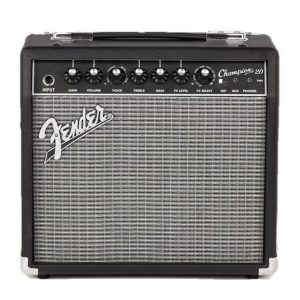
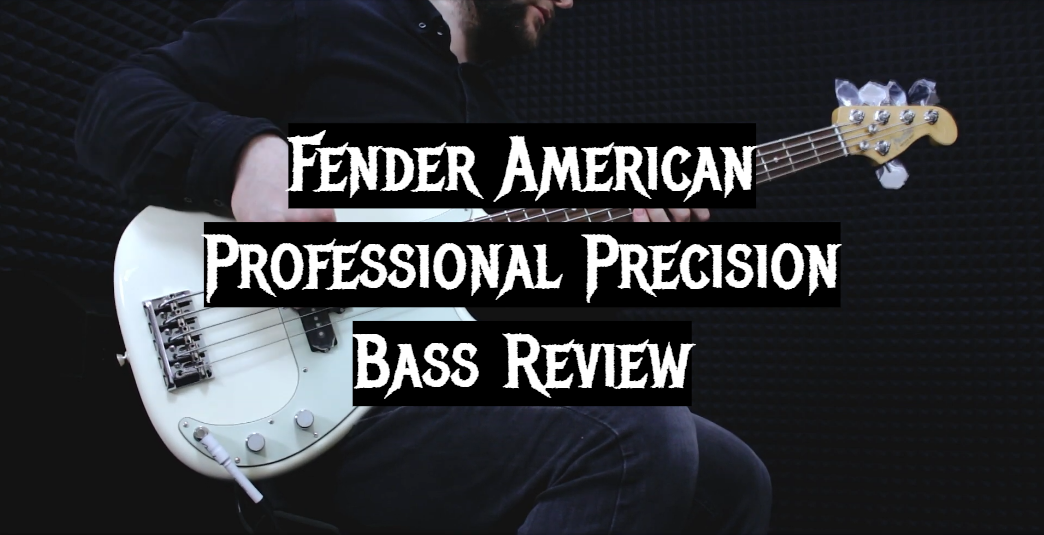
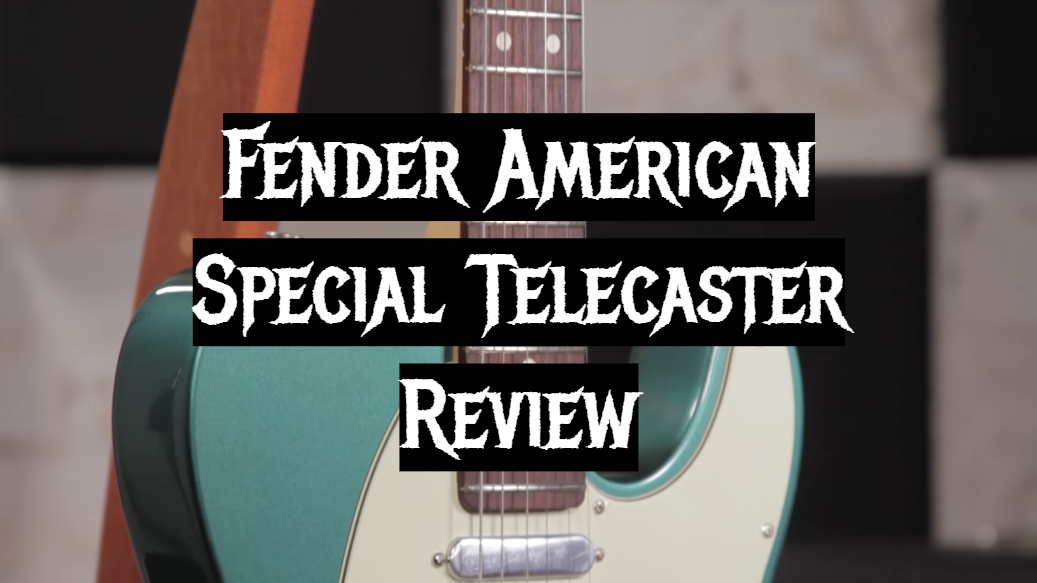
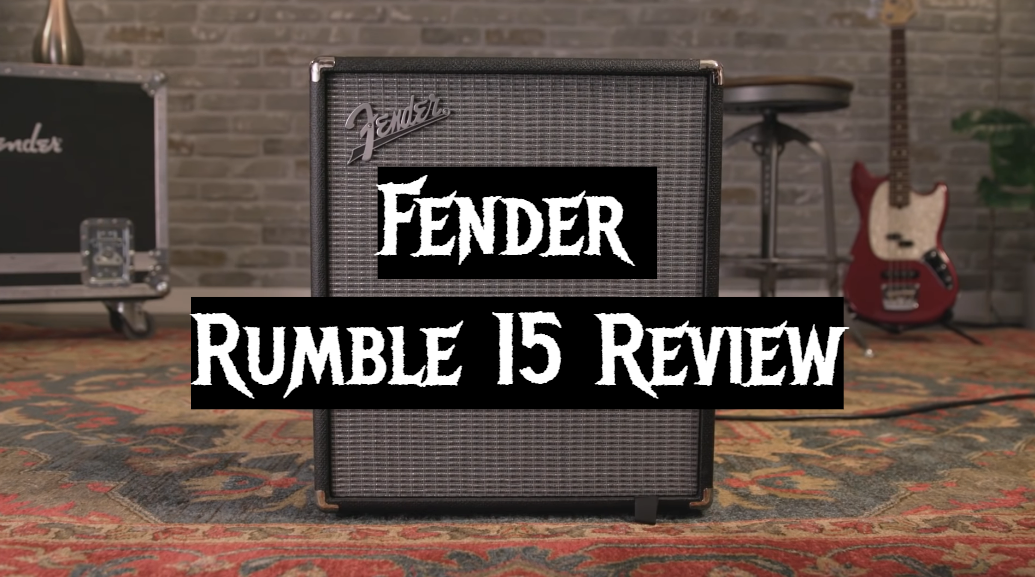
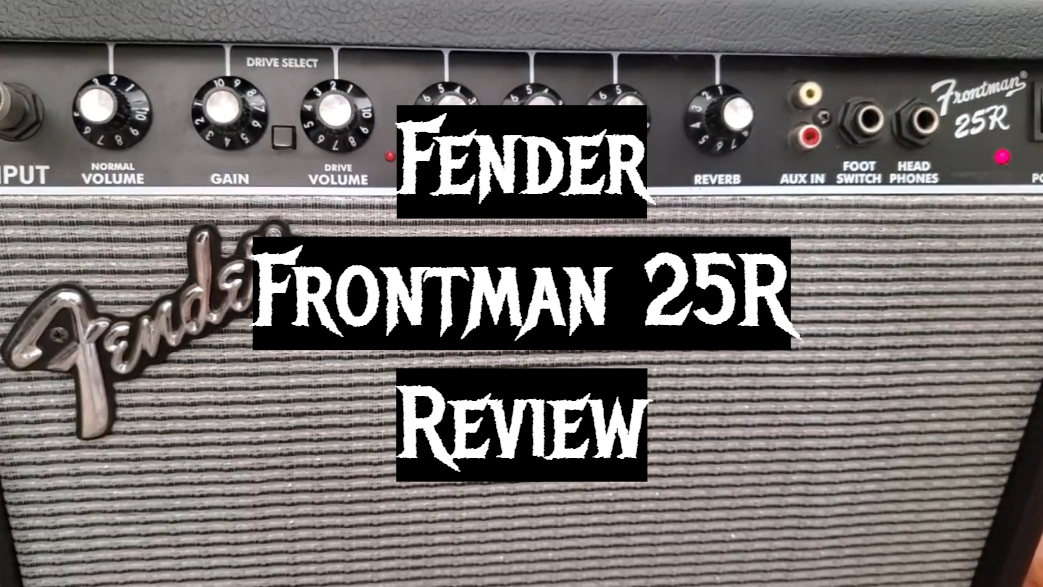
Leave a Reply